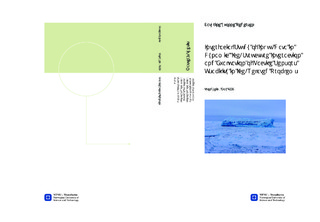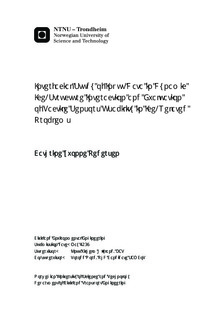| dc.contributor.advisor | Høyland, Knut Vilhelm | nb_NO |
| dc.contributor.advisor | Nord, Torodd | nb_NO |
| dc.contributor.author | Pedersen, Cathrine Yvonne | nb_NO |
| dc.date.accessioned | 2014-12-19T11:33:46Z | |
| dc.date.available | 2014-12-19T11:33:46Z | |
| dc.date.created | 2014-09-11 | nb_NO |
| dc.date.issued | 2014 | nb_NO |
| dc.identifier | 746078 | nb_NO |
| dc.identifier | ntnudaim:11850 | nb_NO |
| dc.identifier.uri | http://hdl.handle.net/11250/233051 | |
| dc.description.abstract | Tactile sensor recordings have been analyzed in time domain, frequency domain and visually to identify failure processes along a structural interface. Except for the pre-study to this thesis, there was not found anywhere in former literature that the spectral analyze method have been applied at small- scale tactile data from a cylindrical indenter. Underlying data have manly been conducted during the Deciphering Ice Inducted Vibration (EU- HYDRALAB DIIV) test campaign at HSVA in 2011. Both global and local forces have been evaluated. Similar to former studies were intermittent crushing found to dominate at lower indentation rates and brittle crushing at higher indentation speeds. For two test series analyzed in this paper transition speeds were found between 80 -90 mm/s and 60-70 mm/s. Contact area in different crushing regimes have been evaluated. Higher correlations in contact area were observed during tendencies to frequency lock-in. Line-like contact tended to prevail in continuous brittle crushing. Trends in time-history plots of experimental data with theoretical results show a decrease in correlation between local forces with increasing indentation velocities. During tendencies to frequency lock-in a resonant frequency of 8.57 Hz was found. This was slightly below the first natural frequency of the system. A possible sub-harmonic frequency was observed in two of thirteen panels within the same time window. Usability and the tactile sensors ability to reconstruct rapid pressure changes have been evaluated as a second stage of this thesis. In addition have there been search to develop an experimental routine to calibrate the tactile sensor. A sensor recording with 100 Hz failed in reconstructing a hammer-excitation, but was well reconstructing forces during a compression test of ice with ductile behavior. In general, output data from the tactile sensor was strongly dependent of the calibration file. | nb_NO |
| dc.language | eng | nb_NO |
| dc.publisher | Institutt for bygg, anlegg og transport | nb_NO |
| dc.title | Interfacial Study of Input Data in Dynamic Ice-Structure Interaction and Evaluation of Tactile Sensors Usability in Ice-Related Problems | nb_NO |
| dc.type | Master thesis | nb_NO |
| dc.source.pagenumber | 181 | nb_NO |
| dc.contributor.department | Norges teknisk-naturvitenskapelige universitet, Fakultet for ingeniørvitenskap og teknologi, Institutt for bygg, anlegg og transport | nb_NO |

